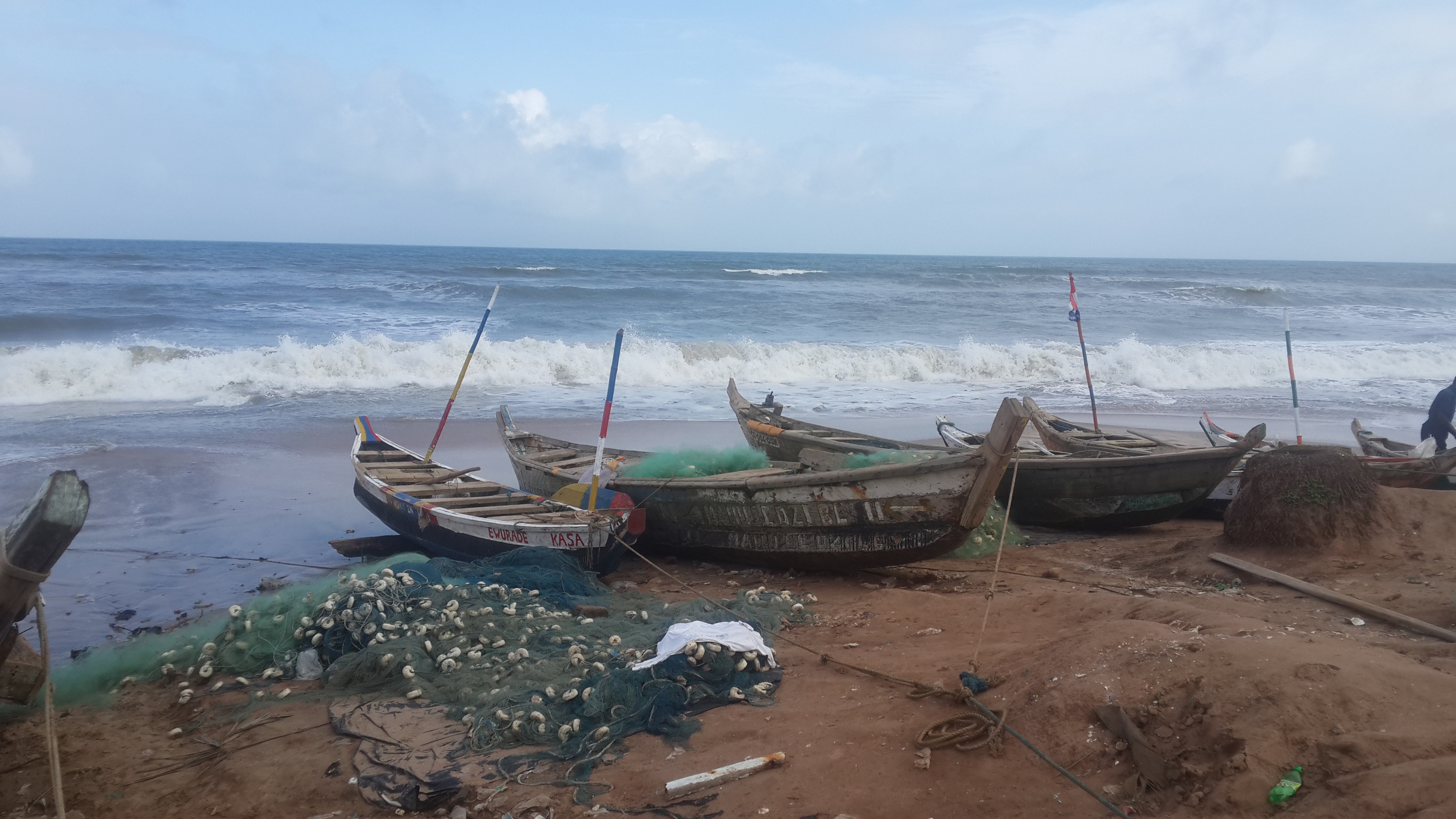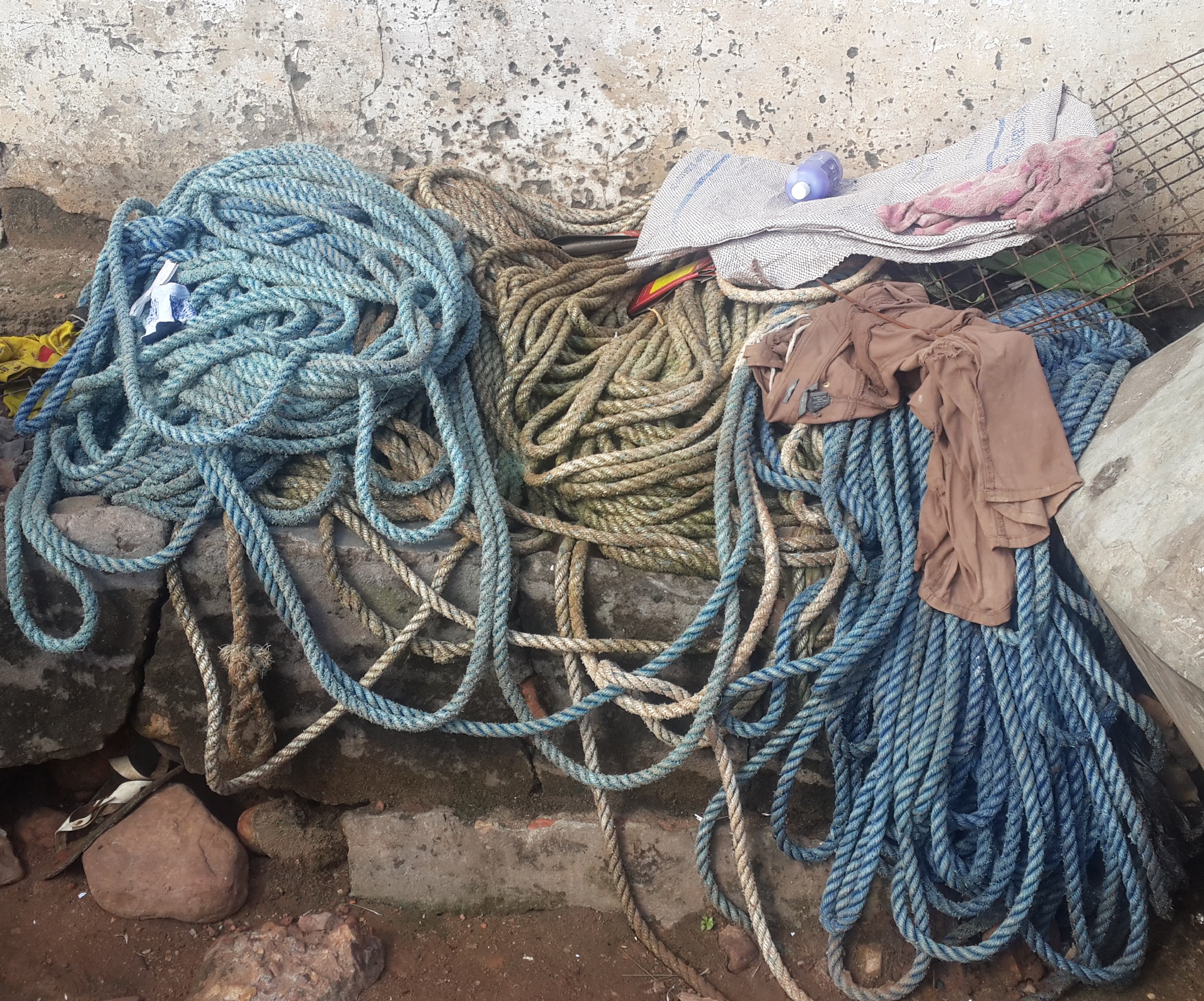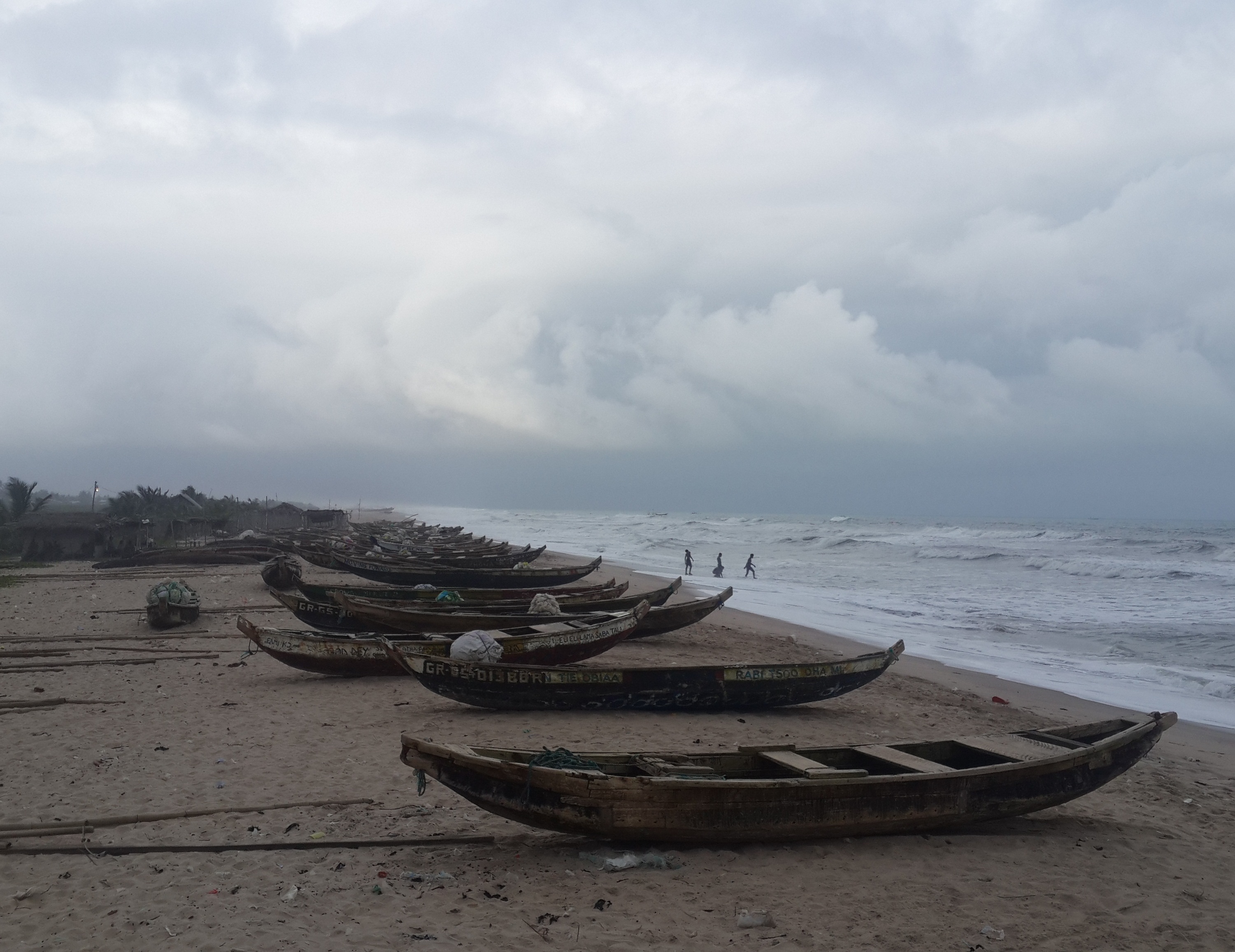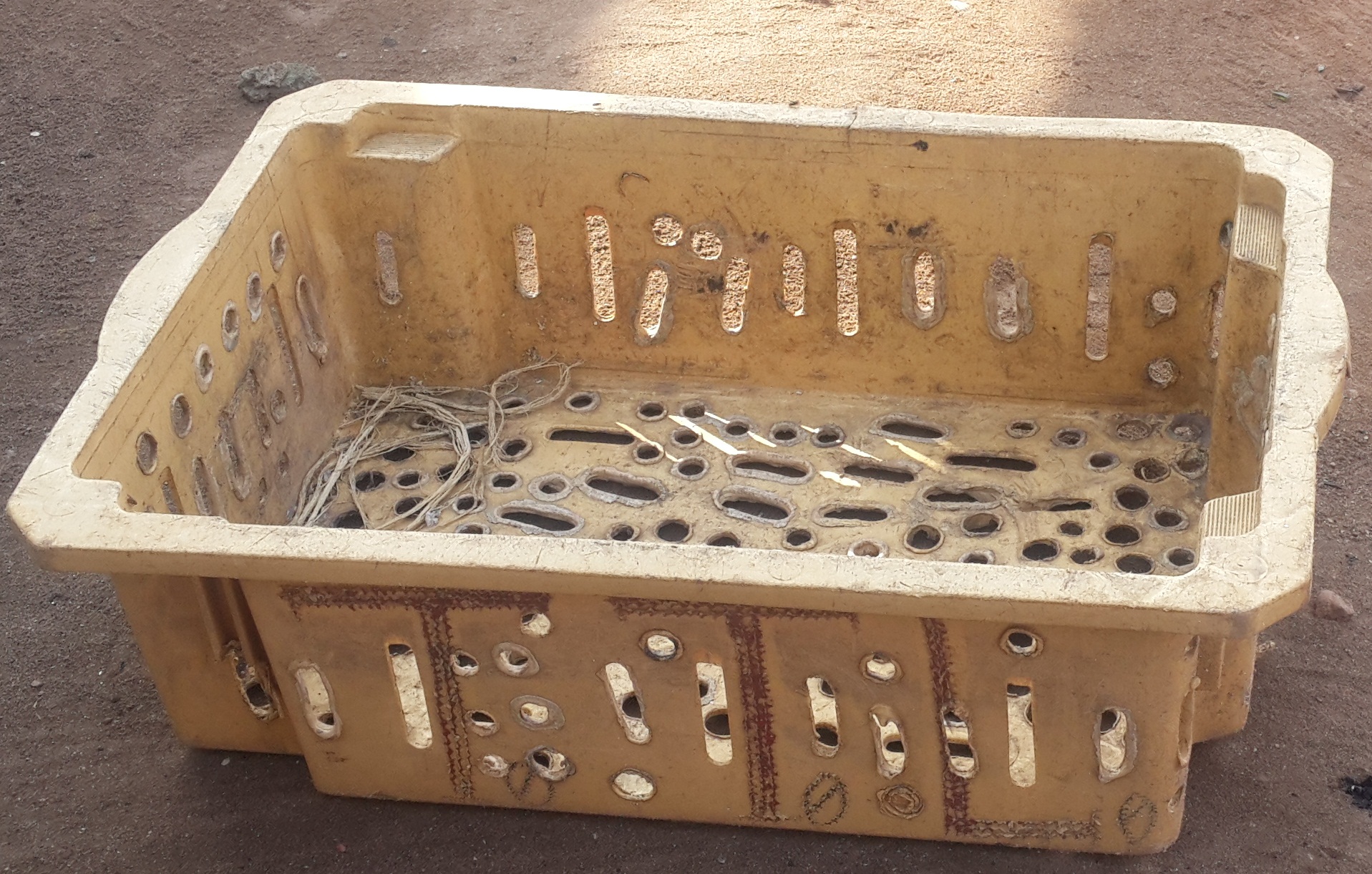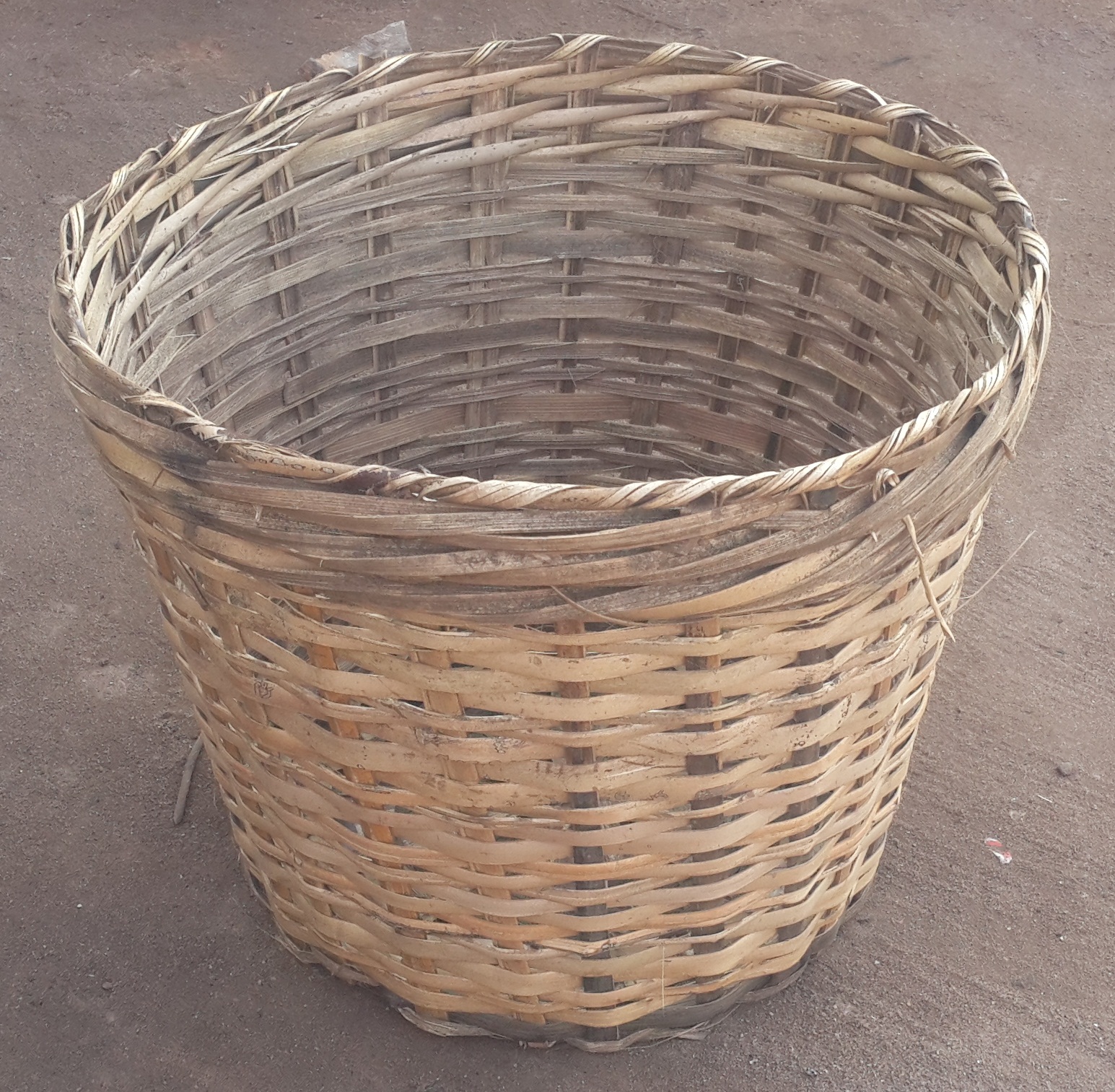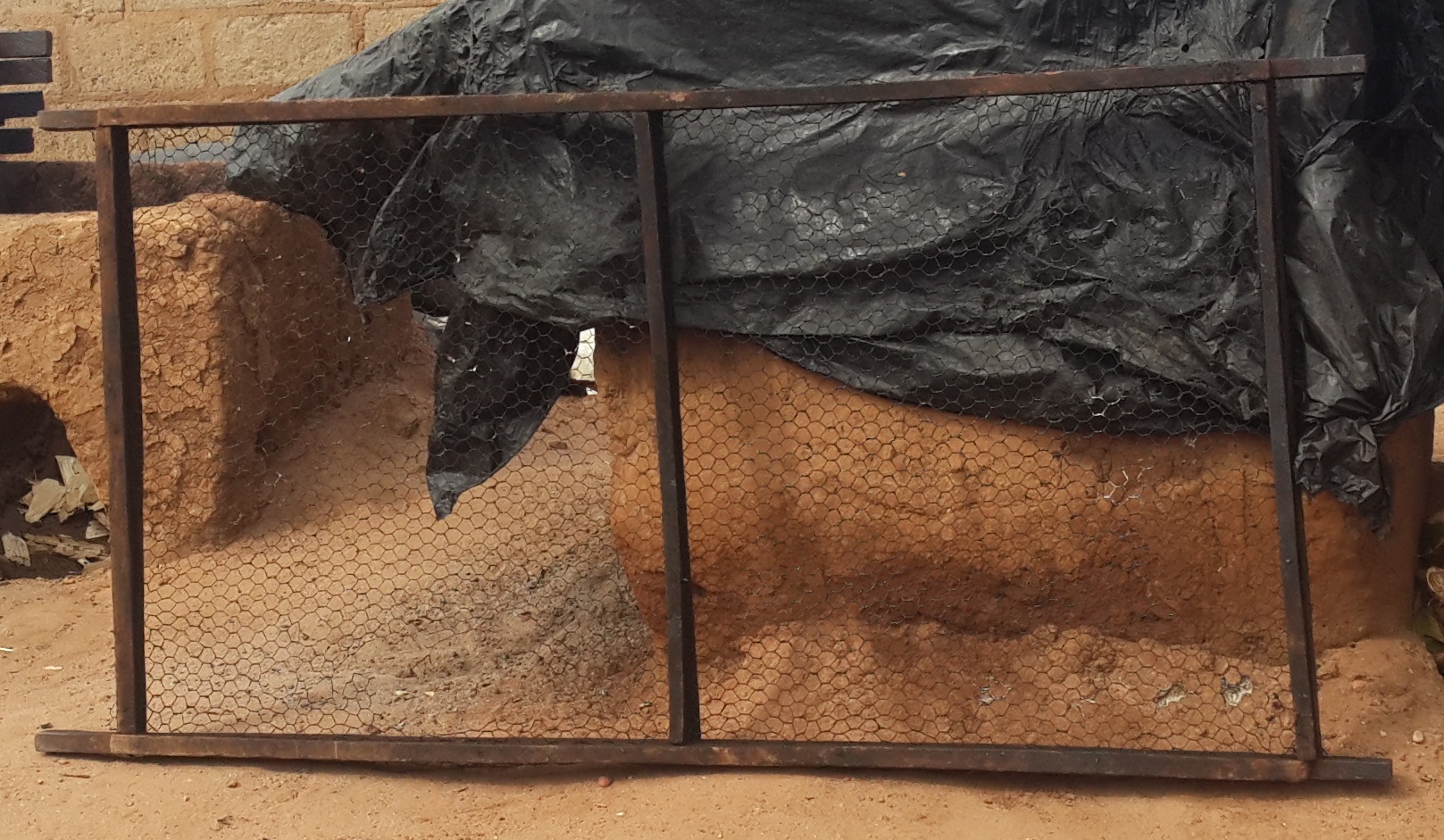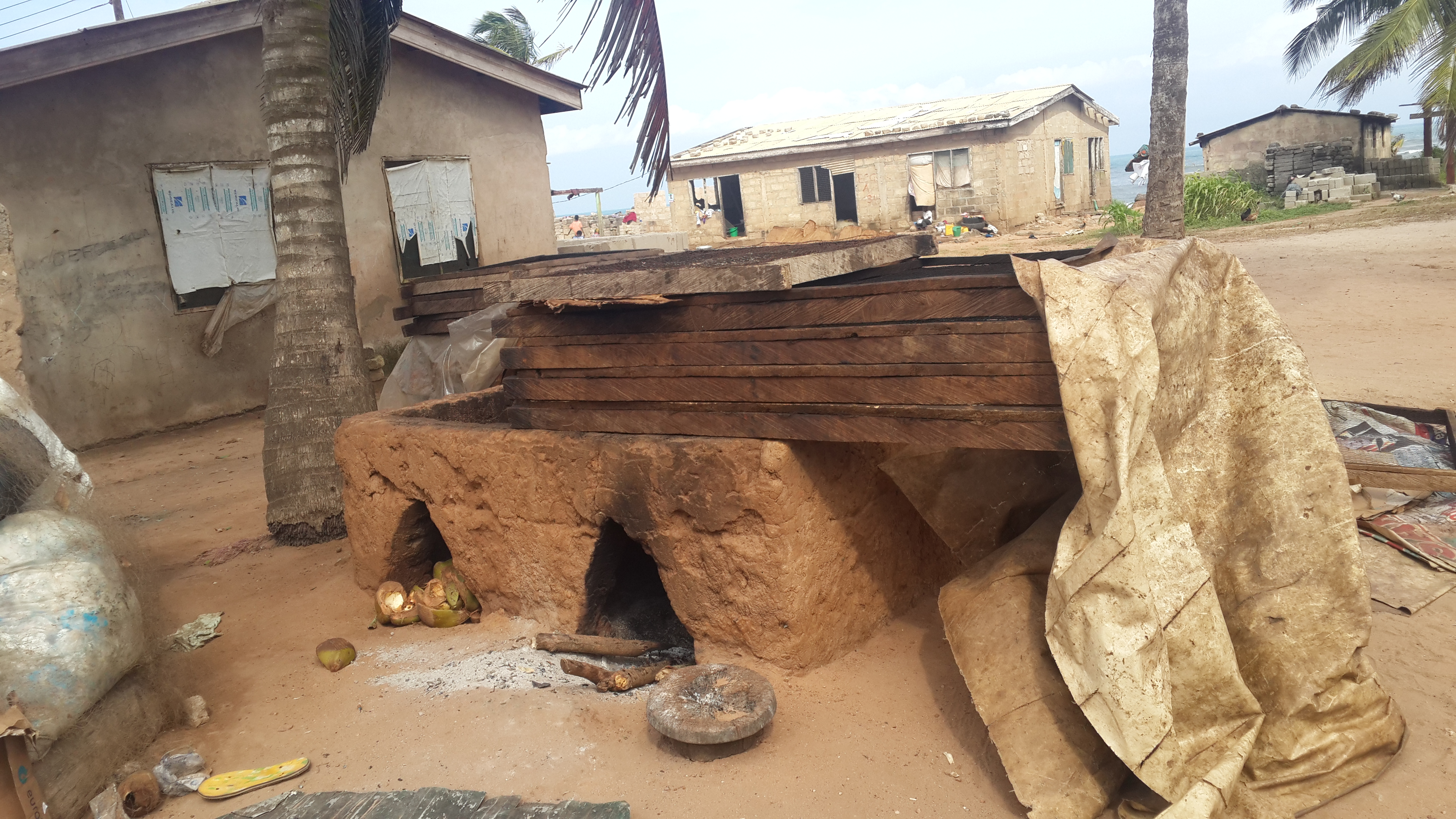FISHING IN OSHIYIE
Like most fishing communities in Ghana, Oshiyie practices marine fishing. The catch mostly consists of Red Fish, Lobsters and Crabs. Tuna and herring are usually caught between July and August, while Am?ni is caught from December to January.
Fishing is mostly done by the men in the community while the women stay home to keep the house. The women also smoke fish as a means of preservation for sale or later use. Techiman and Chorkor are some of the areas that get their fishes from Oshiyie. The prosperity of the fisherfolk was so much that fishermen from other communities – Bortianor and Kokrobite also came to Oshiyie to fish many years ago.
FISHING BOAT
It is a dugout canoe made from a hollowed tree trunk with tree logs across the hollowed trunk, which serves as sitting area and also demarcation for keeping the fish caught. A fishing boat often has a storage space to keep fish they catch. Fishing boat uses a trawl net or dragnet to catch fish.
FISHING NET
Fishing nets are made of mesh usually formed by knotting a relatively thin thread. Cast nets are round nets with weights on the edges which is thrown by the fisherman. The net is thrown by hand in such a manner that it spreads out on the water and sinks.
The heavier weights, known as ‘sumui,’ cause the net to sink, while the floats, known as ‘kako’, cause the other edge of the nets to float. This helps the fisher folks identify where their nets were cast. Fish are caught as the net is hauled back in. Smaller nets are used by the small boat (shallow sea culture) fishermen for their lobsters and crabs.
OUTBOARD MOTOR
This modern addition to the fishing profession propels the fishing boat to move faster. It provides a steering control.
NTAN
This bag like net is used to store lobsters and crabs once they are caught during the week. The bag, together with the catch for the week, is kept in the sea and subsequent additions made to the catch till Sunday when the nta? is finally brought out of the water. Crab and lobster sales are usually done on Sundays.
FUEL
Premix fuel is used to power the outboard motors used by the fishermen. It is usually stored in plastic containers.
FISHING ROPE
These ropes help the fishermen drag the fishing net out of the sea after casting in the net.
OAR
A long shaft with a board blade at one end, used as a lever for rowing or otherwise propelling or steering a boat. They are usually wooden and are carved from the trunk of trees.
SMALL BOAT FISHING
In Oshiyie, fishermen engage in three types of fishing depending on the type of boat they use. Two types of fishing involve using the small boats and the last type involves the use of the big boats that are used for deep sea fishing.
The first type of small boat fishermen are known as the S??wol?. They are noted for lobster and crab fishing. For this type of fishing, there are mostly two to three people each using their own nets. These fishermen are at liberty to cast their nets at any part of the sea based on their discretion.
The nets are left at sea overnight and checked the next morning between 6 and 8am for any catch. Lobster sales are usually held on Sundays. Some boats use outboard motors and others use paddles. Over the course of the week, any lobster or crab caught is kept in a netlike bag known at Nta?. Wood and metal are used to drag the fishing boat ashore with the help of ropes.
The second type of small boat fishing is by the Niishawol?. They are known for catching red fish. Fishing is done using Yiiwa (hook and line). The bait used is Am?ni, gotten from the big boat fishermen. These fishermen go to sea around 4 or 5 am every morning and come back between 1 and 4 pm in the afternoon.
Niishawol? fishermen use oars and sails to move instead of the outboard motors since they are mostly stationary. The line with several hooks fixed unto it at consistent intervals are folded and hooked onto a board. At sea, the line with the hooks is released into the sea while the boat is anchored. From time to time, the line is checked to see if there is a catch. If there is, they draw in the line with the fish caught and then sail home.
BIG BOAT FISHING
The big boat fishermen, Polywol? are known for their Poku (Tuna), Am?ni, Doctor Fish, Ma? (herring), Saflo, Oduee (Bonito) and Gba. They are involved in deep sea fishing and make use of an outboard motor, mast and oars. These boats could be owned by a family or an individual.
In this kind of fishing, one person stands at the bow of the boat looking into the sea. Once he sees a shoal of fish approaching, he announces the information to the other fishermen and they get ready to cast their net over them. If the shoal of fish is too large for one boat, they call for the assistance of other fishermen in other boats close by.
Profit is divided into three parts .The first part goes to the owner or owners of the boat, the second part to the fishermen and the last part is kept for the purchase of premix fuel for the next trip and maintenance of the outboard motor.
If the owner or owners of the boat cannot be present for the sharing of the catch, they select a ‘Bosom’ (representative) who receives their portion on their behalf. The bosom is given a part in the owner’s share after he delivers it to the owner. In the event that the fisher folks cannot equally divide the catch amongst the three parties, the excess is given to the Bosom.
ADEKA
A basket that serves as a unit of measurement for the fishermen and traders. Every Adeka of fish has a standard price.
KENTEN
This basket stores the fish once it has been brought home. Two Adekas of fish make one full Kenten of fish. Fish is kept in this basket to allow the water drain out of it.
DADE
These are metallic grids on which fishes are placed for smoking. The sides are wooden which makes it easy for the fish smokers to move them when smoking fishing.
LOOBU
This refers to the fireplace made from clay. It is usually molded into a rectangular shape usually the length and width of the dade. The dade is placed on it during fish smoking.
FISH SMOKING
When fish is brought from the sea, the women leave it in the k?nt?n for some time in order to drain the water in it. After some time, the fish is arranged on the dade and the rest of the water allowed to drain. Depending on the amount of fish to be smoked, the number of dades are packed with fish and stacked over the already lit loobu. The material used to make the fire in the loobu include firewood and coconut or sugarcane. Coconut or sugarcane when used have a special effect of making the fish look red instead of the traditional black colour after smoking.
In about twenty minutes, the whole stack of dade packed on the loobu is brought down for a reshuffle. The last dade which had direct contact with the heat and smoke from the loobu is removed and put on top of the stack. This process is repeated till all the dades have had contact with the loobu. Once all the fish are well smoked, they are packed into a bigger k?nt?n and either stored for later use or sold to the various neighboring markets or consumed at home.
FARMING
Farming was very popular at a time when human settlement in Oshiyie was on the low. When fishing season was over, it was the main occupation for many people in Oshiyie. With the recent loss of land to real estate development, farms have become smaller but are still popular especially at the part of Oshiyie known as Beachview. The most common crop that is grown is maize. Some farmers also grow a few vegetables like tomatoes. These farms are usually fenced with similar nets that are used for fishing.
SHOPS
A majority of the population in Oshiyie own small tabletop shops that have various goods in stock. Most food vendors in the community use structures like this for their trade. They could also be as simple as just a table with their wares arranged neatly on it. These foods range from fruit stands to kenkey and fish, fried yam and turkey stand, Indomie noodles stands, banku and soup, and many more. Some upgraded shops have their wares in kiosks (containers) and are mostly known as provision shops. These shops sell convenience items like bread, eggs, water, juice, toiletries, and other household necessities. Other operating shops in the community are hairdressing salons, pharmacies and drinking spots.
